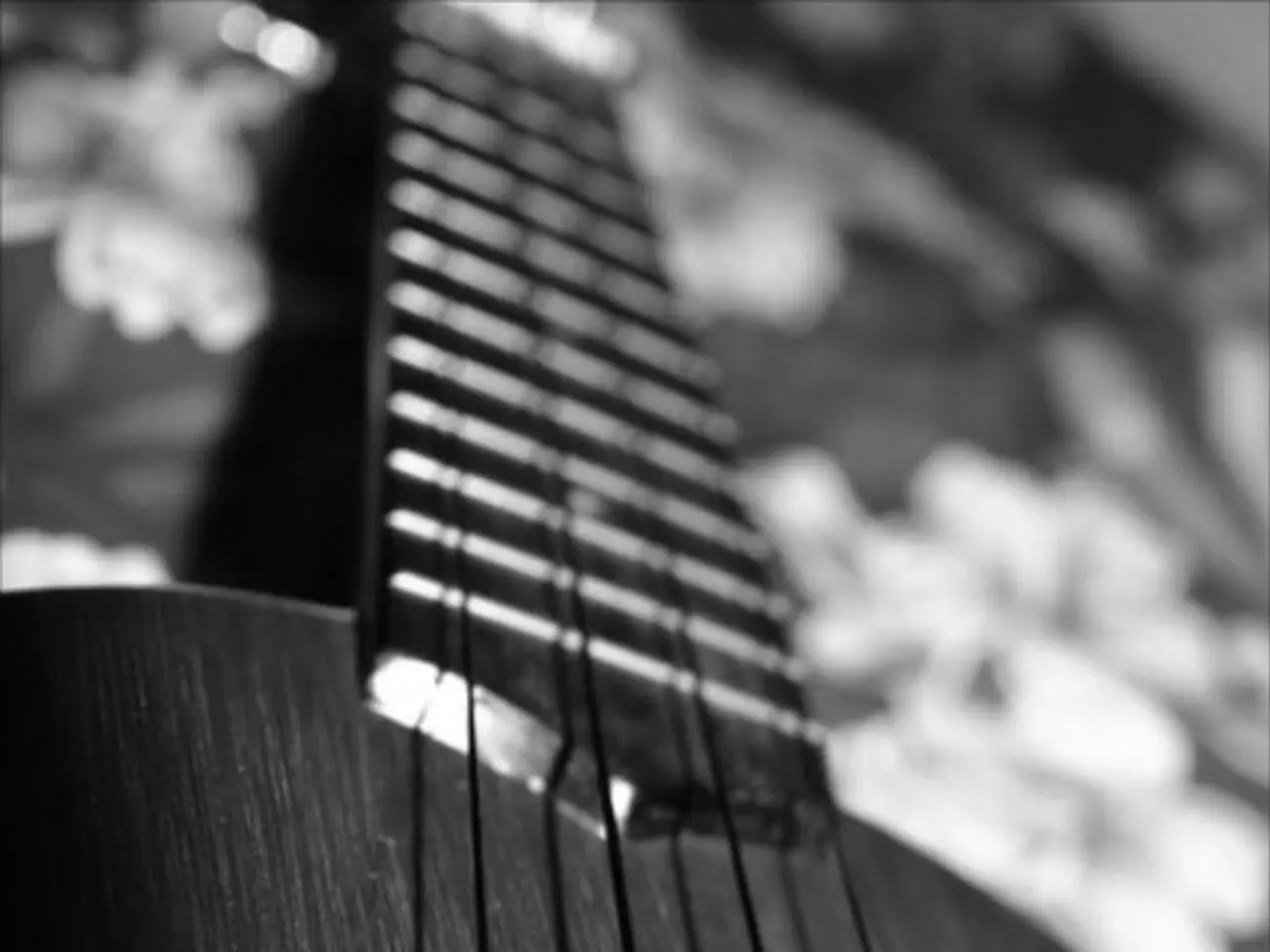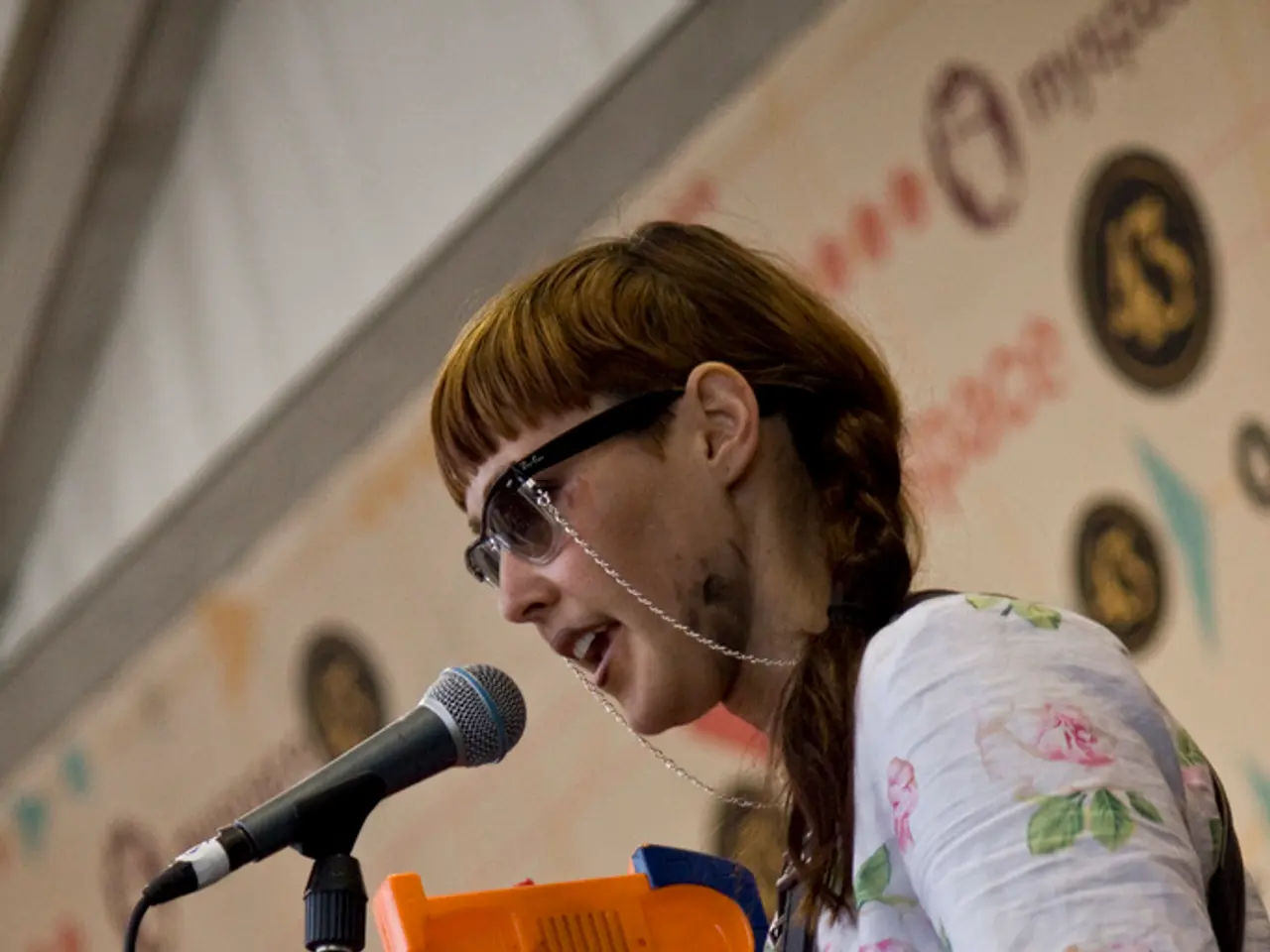Object with a maximum width of 30 centimeters
In the heart of Cologne, renowned composer and bassist Sebastian Gramms is making waves in the world of jazz and contemporary music. Born in 1966, Gramms is a pioneering figure in the city's vibrant music scene, known for his innovative approach to blending jazz improvisation with chamber music sensibilities [1][2].
One of Gramms' most groundbreaking innovations is his use of helix structures, inspired by the auditory illusions discovered by French composer Jean-Claude Risset in the late 1960s. Risset's auditory illusions, famously known as the Shepard-Risset glissando, involve continuous sound phenomena that create the perception of endlessly rising or falling pitches [3].
Gramms applies the idea of these auditory illusions to develop new compositional methods within jazz and contemporary music. By exploring evolving textures and harmonic cycles, he challenges conventional time and pitch perception, expanding the sonic possibilities of the double bass and cello in his ensembles [1][2].
The helix structures, in particular, are a new development in Gramms' music career. These structures involve the synchronization of fading or fading rhythmic streams played at different speeds, creating a seamless transition that reinforces the illusion of slowing or speeding up [4]. Instruments overlap in speed, adding layers of sound and rhythm that transcend typical jazz frameworks.
The pieces composed with the helix structure by Gramms cannot be characterized using conventional rhythmic terms, as they are not polyrhythmic or merely tempo changes combined [5]. Instead, they offer a unique blend of rhythm and harmony that pushes the boundaries of traditional music.
Gramms is the first known person to make productive use of the "Risset rhythm," writing pieces and applying it to various ensembles [6]. His studio on Vogteistraße has been transformed into a creative temple of constant exchange with musician friends, serving as a hub for his creative endeavours [7].
In addition to his work with helix structures, Gramms has launched numerous spectacular projects, including the orchestra Bassmasse, which consists solely of double basses [8]. He continues to innovate and launch new projects in the Cologne jazz scene, positioning himself as a forward-thinking figure in modern jazz and experimental music.
In June, Gramms will open the doors to his workshop, allowing listeners to experience the helix structure live with his ensembles and soloists. He is also planning a festival to showcase his discovery, the helix structures, to the world. This event promises to be a landmark moment in contemporary music, bringing fresh momentum to the genre with Gramms' innovative approach.
As Gramms prepares for these upcoming events, a biographical interview with him is planned for September 2023. However, he is currently working on something that will at least turn his own music on its head - the helix structures. With countless variations in which and at what tempos a Helix can be composed and played, it's clear that Gramms' work is far from over. The future of contemporary music and jazz is undoubtedly in good hands with innovators like Gramms at the helm.
Sebastian Gramms' innovative use of helix structures in contemporary music is a testament to his creativity and commitment to pushing the boundaries of jazz improvisation. His unique blending of auditory illusions with chamber music sensibilities has resulted in a new, unconventional rhythm-harmony combination that transcends traditional music forms.






